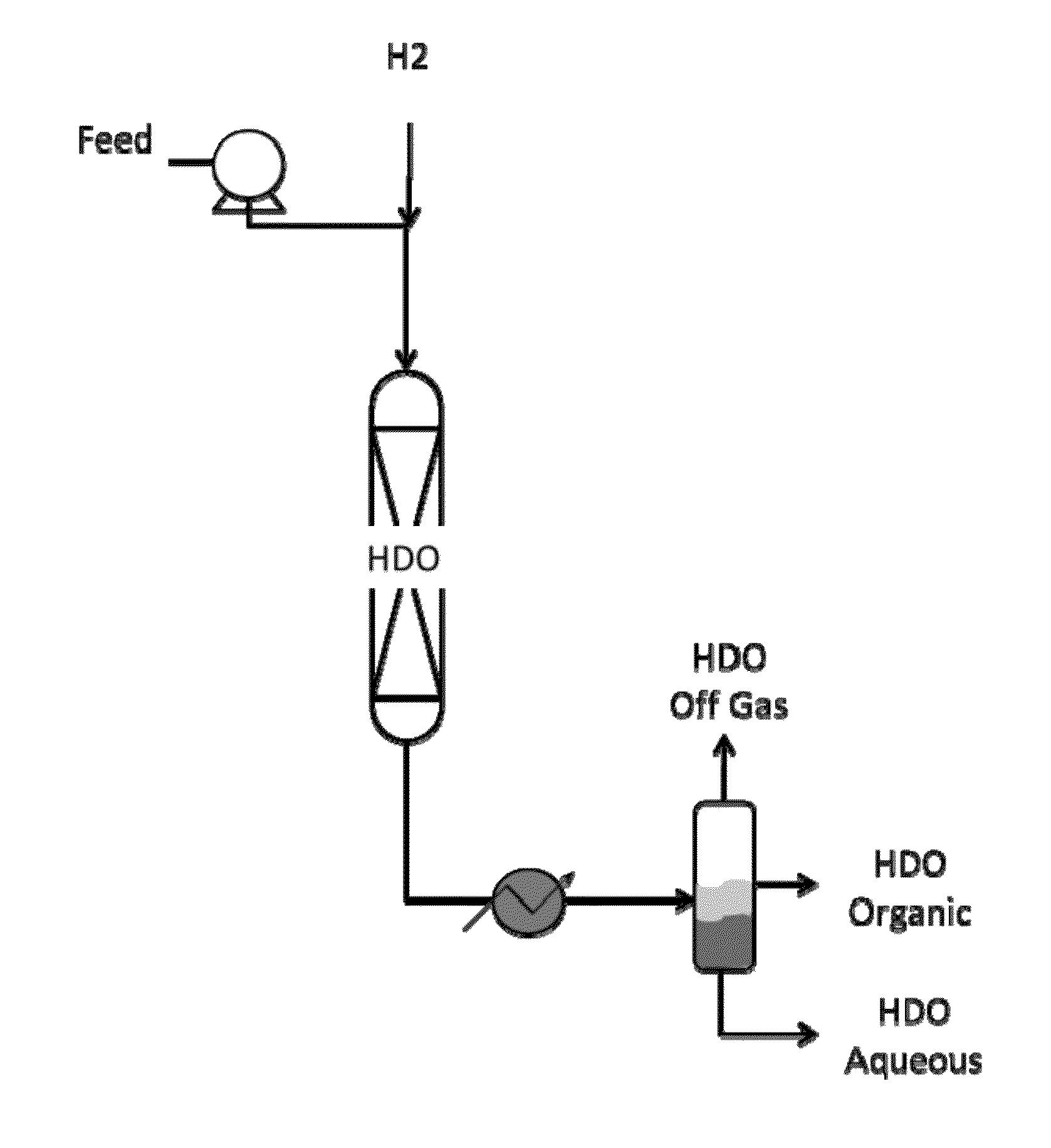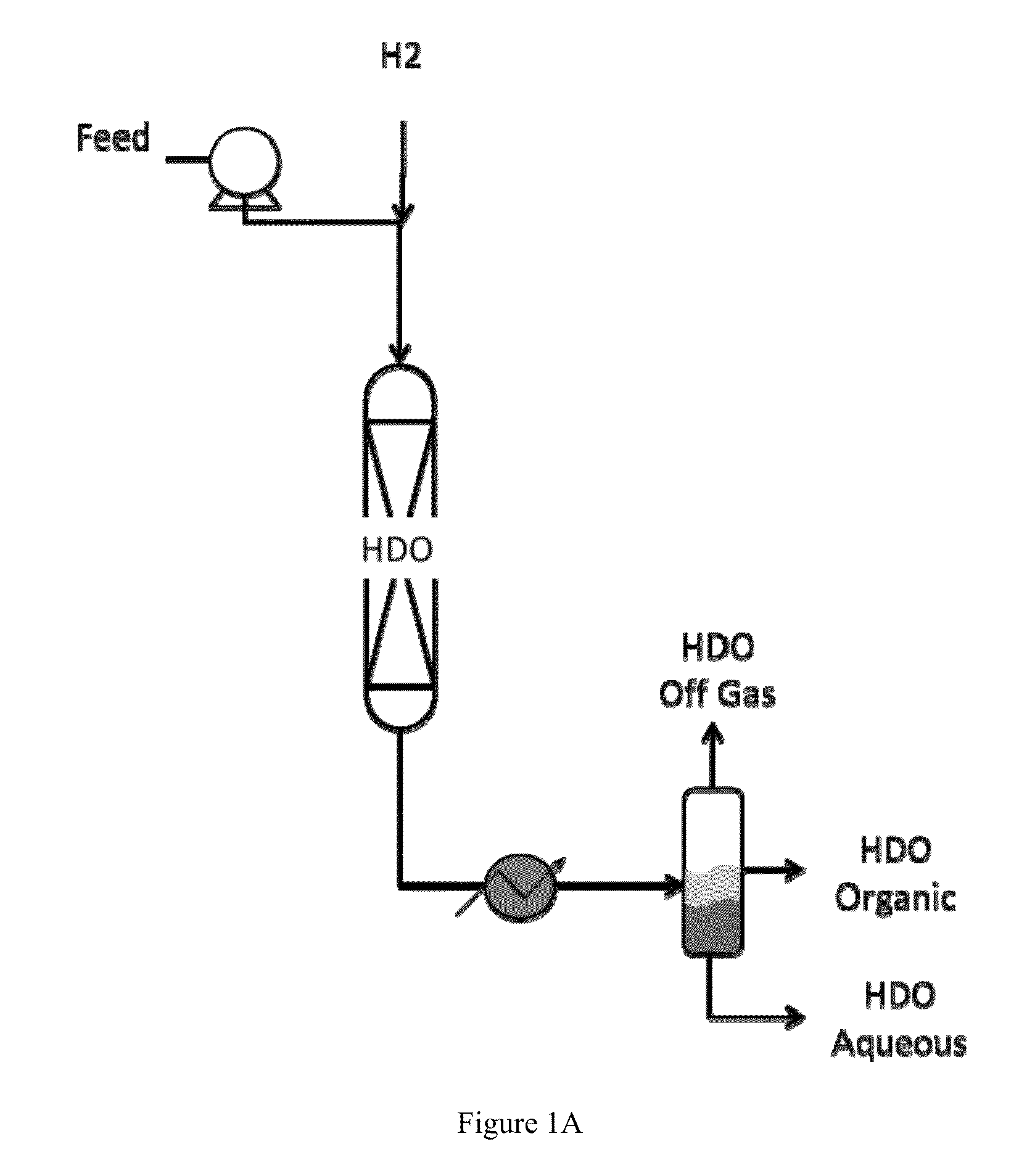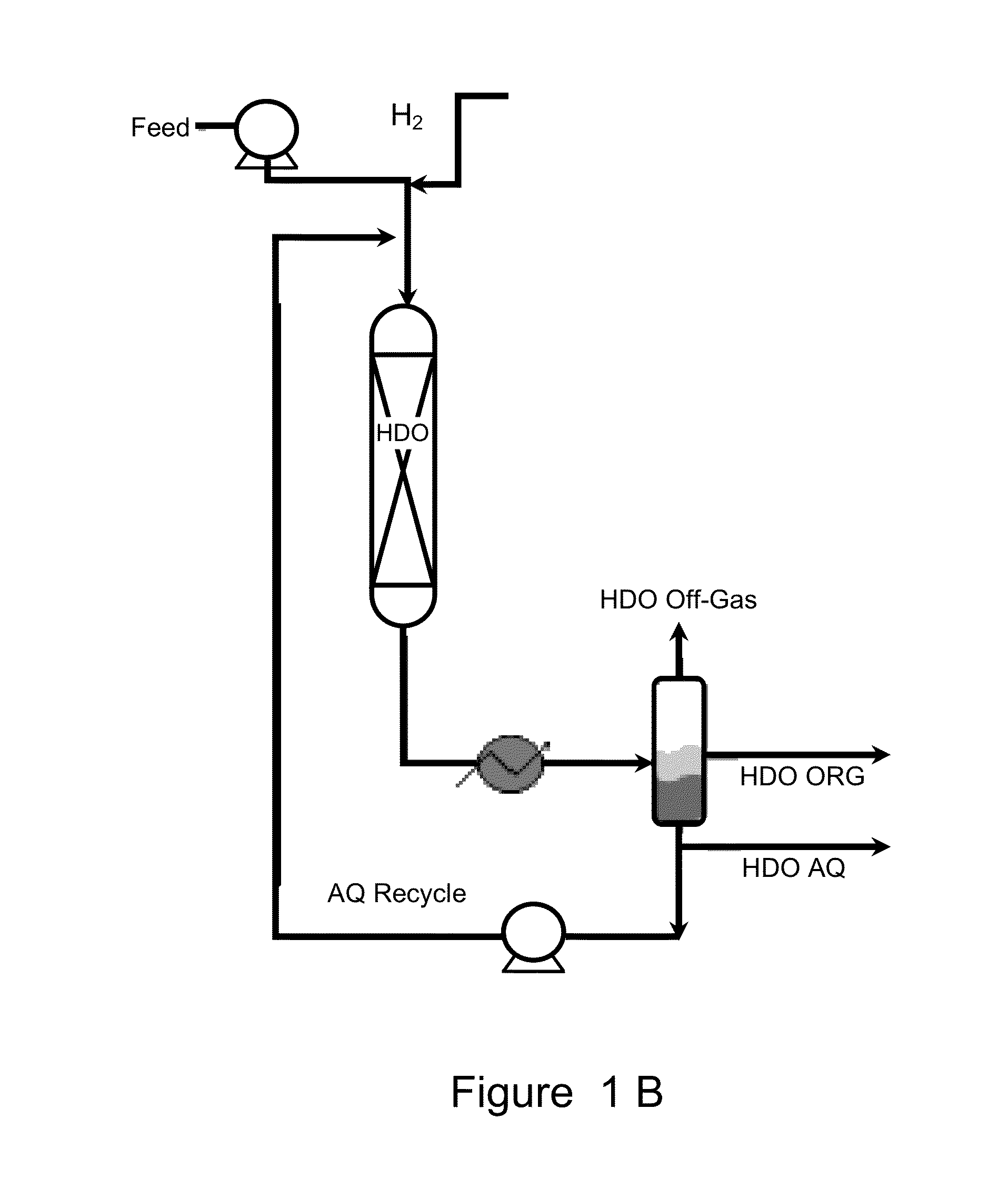Catalysts for hydrodeoxygenation of oxygenated hydrocarbons
a technology of catalysts and hydrocarbons, which is applied in the direction of catalyst activation/preparation, metal/metal-oxide/metal-hydroxide catalysts, chemical/physical processes, etc., can solve the problems of high equipment and processing systems capable of sustaining extreme temperatures and high temperatures, and carry additional costs. , to achieve the effect of reducing carbonaceous deposits, reducing carbonaceous deposits, and reducing carbonaceous deposits
- Summary
- Abstract
- Description
- Claims
- Application Information
AI Technical Summary
Benefits of technology
Problems solved by technology
Method used
Image
Examples
example 1
[0094]A monometallic catalyst containing 5 wt % palladium on tungstated zirconia was prepared using incipient wetness techniques. An aqueous solution with a volume equal to the incipient wetness volume for the tungstated zirconia to be impregnated, 5.5 mL, and containing 1.3 g of palladium (II) nitrate hydrate (Alfa Aesar) was poured over 10 g tungstated zirconia (Norpro) and was shaken vigorously for 2 minutes. The catalyst was dried at 120° C. under vacuum for 3 hours. The catalyst was then calcined with air at a gradient temperature reaching 400° C. over a period of 4 hours. Once the desired temperature was reached, the catalyst was further soaked in air for an additional 6 hours.
example 2
[0095]A monometallic catalyst containing 5 wt % palladium on monoclinic zirconia was prepared using incipient wetness techniques. An aqueous solution with a volume equal to the incipient wetness volume for the monoclinic zirconia to be impregnated, 3.3 mL, and containing 0.64 g of palladium (II) nitrate hydrate (Alfa Aesar) was applied dropwise to 5 g monoclinic zirconia (Norpro). The catalyst was dried at 120° C. under vacuum for 2 hours. The catalyst was then calcined with air at a gradient temperature reaching 400° C. over a period of 4 hours. Once the desired temperature was reached, the catalyst was further soaked in air for an additional 6 hours.
example 3
[0096]A monometallic catalyst containing 5 wt % palladium supported on tetragonal zirconia was prepared using incipient wetness techniques. An aqueous solution with a volume equal to the incipient wetness volume for the tetragonal zirconia to be impregnated, 3.5 mL, and containing 0.56 g of palladium (II) nitrate hydrate (Alfa Aesar) was applied dropwise to 4.5 g tetragonal zirconia (Norpro). The catalyst was dried at 130° C. under vacuum for 3 hours. The catalyst was then calcined with air at a gradient temperature reaching 400° C. over a period of 4 hours. Once the desired temperature was reached, the catalyst was further soaked in air for an additional 6 hours.
PUM
| Property | Measurement | Unit |
|---|---|---|
| temperature | aaaaa | aaaaa |
| temperature | aaaaa | aaaaa |
| pressure | aaaaa | aaaaa |
Abstract
Description
Claims
Application Information
 Login to View More
Login to View More - R&D
- Intellectual Property
- Life Sciences
- Materials
- Tech Scout
- Unparalleled Data Quality
- Higher Quality Content
- 60% Fewer Hallucinations
Browse by: Latest US Patents, China's latest patents, Technical Efficacy Thesaurus, Application Domain, Technology Topic, Popular Technical Reports.
© 2025 PatSnap. All rights reserved.Legal|Privacy policy|Modern Slavery Act Transparency Statement|Sitemap|About US| Contact US: help@patsnap.com



